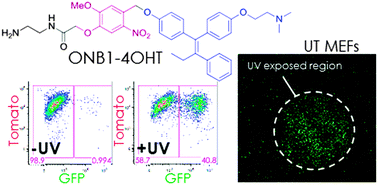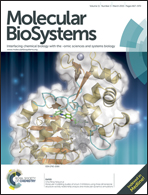4-Hydroxytamoxifen probes for light-dependent spatiotemporal control of Cre-ER mediated reporter gene expression†
Abstract
The tamoxifen inducible Cre-ER/loxP system provides tissue specific temporal control of gene recombination events, and can be used to induce expression of reporter genes (e.g. GFP, LacZ) for lineage tracing studies. Cre enzyme fused with estrogen receptor (Cre-ER) is released upon tamoxifen binding, resulting in permanent activation of reporter genes within cells and their progeny. Tamoxifen and its active metabolite, hydroxytamoxifen (4OHT) diffuses rapidly in vivo, making it difficult to restrict labeling to specific locations. In this study, we developed a photocaged 4OHT molecule by covalently attaching 4OHT to an ortho-nitrobenzyl (ONB1) group, rendering 4OHT inactive. Exposure to UV radiation cleaves the bond between ONB1 and 4OHT, freeing the 4OHT to bind Cre-ER to result in downstream genetic recombination and reporter activation. We show that caged ONB1–4OHT crosses the cell membrane and uncages after short UV exposure, resulting in Cre-driven genetic recombination that can be localized to specific regions or tissues. ONB1–4OHT can provide spatial control of reporter activation and be adapted with any existing Cre-ER/loxP based system.


 Please wait while we load your content...
Please wait while we load your content...